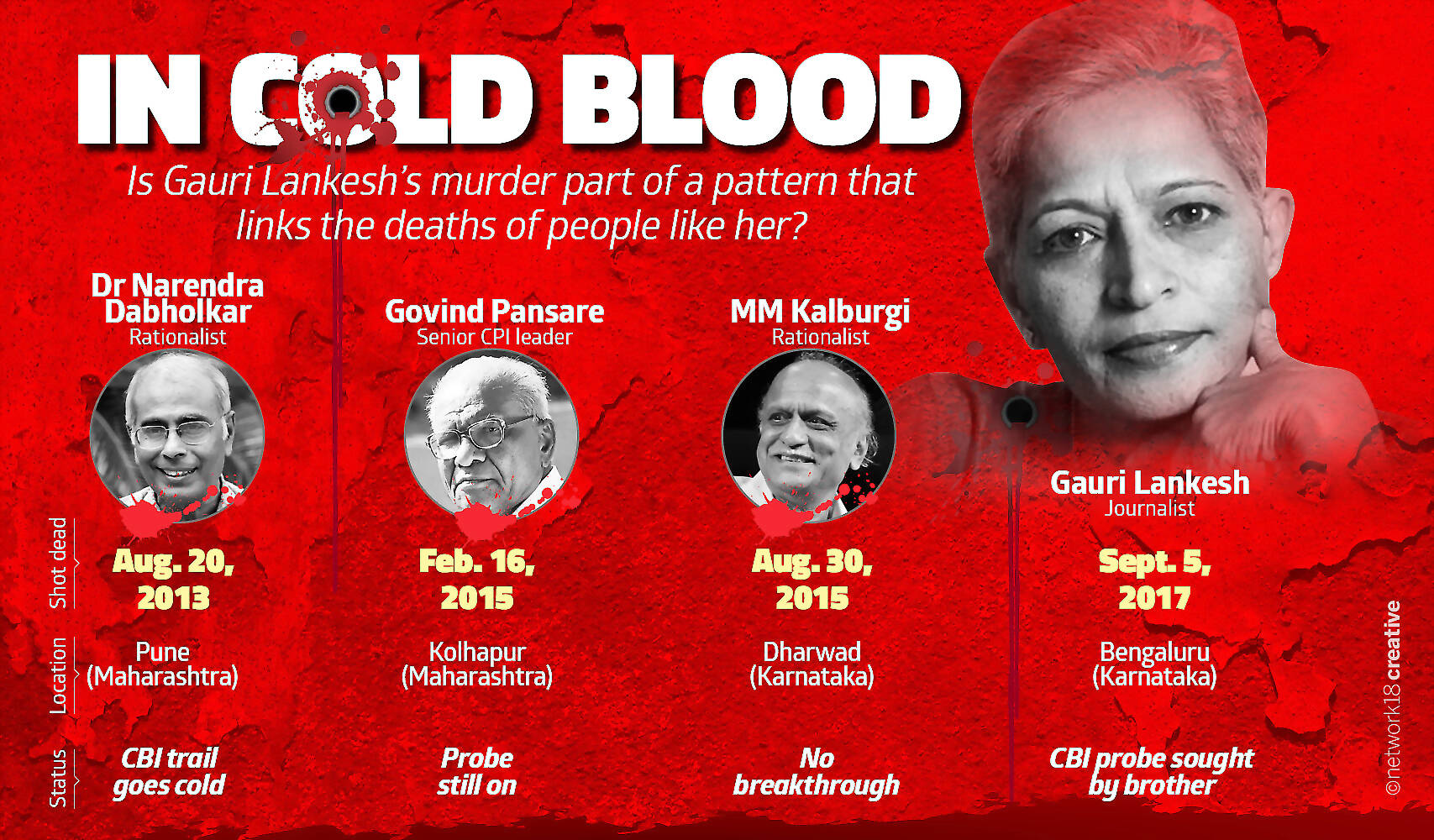
views
Bengaluru: “Not fine,” says a senior police officer, when we ask him how he is. He is part of the 21-member crack team – the Special Investigation Team (SIT) -- set up to solve the cold-blooded murder of journalist-activist Gauri Lankesh.
This is one whodunnit, though, that is no mean mystery – that’s the only thing that the core team has realised in the past ten days since Gauri was downed by four bullets just as she landed home on the night of September 5.
For, in these ten days, the team has tracked down many blank leads, many theories, spoken to (and taken statements from) over a hundred people, put their best minds from tech to forensics to ballistics into the job, and yet, not put their finger on an actual killer – of course, none of this has been aided by the huge amount of media speculation that the incident has seen.
The other reason that the trail has not made much headway is because – let’s face it -- it is a mammoth task. It requires a huge amount of data analysis, collation and interpretation. It requires painstaking coordination between different forces, different viewpoints, and diverse data. This is one case the police cannot afford to mess up – considering that the hit-men in three other similar murders are yet to be brought to book -- the murders of Dabholkar and Pansare in Maharashtra and Kalburgi in Karnataka.

So, how does one crack a case like this? What happens behind the scenes of an investigation like this is quite a ‘making-of-the...’ story in itself.
Let’s take it one at a time:
Crime scene: Was it sanitised?
On the night of the murder, though the police had cordoned off the entry to the home, there were quite a few journalists, activists, locals who were trampling around the home, the empty plots of land next door, the car in which Gauri had just arrived. What fingerprints can be taken from the outside of the car, how much of the evidence is material, how much is not, takes its own time. Even today, police officers are at the scene of crime, trying to see if they missed something. A thoroughly-wet cellphone covered in mud, for instance, was recovered days after the crime, less than 200 metres from the home. Though it is now not yielding any further leads (considering it has seen two spells of very heavy rainfall), it has to be checked by forensic experts for any clues.
Camera images
There were four CCTV cameras around Gauri’s house, two of which were focussed on the porch outside – where she was killed. The key footage that the police found shows Gauri driving home just after 8 pm, getting off her car, entering the small gate into the compound of her duplex home, turning around to open the larger gate so that she could drive herself in. It was at this moment that she found herself facing her killer. Two shots were fired, she tries to move away, startled and aware of the danger, the attacker goes around, shoots twice more. One hits a wall, another her chest. She falls, he goes away, presumably to a getaway vehicle with a rider outside. He is seen wearing a white shirt, a black helmet. The entire episode took less than ten seconds. “She was a brave woman,” says an officer who has seen the video.
Surveillance cameras
Police have taken up another massive task – trying to see if Gauri was followed. How did they know she would enter her home at that exact time? Obviously, someone was lying in wait, but was there someone else who was following her? Theories have emerged on a two-wheeler following her, but in Bengaluru’s peak hour traffic, there is no conclusive evidence so far. This however involves the long process of scrutinising many hours of videos from traffic surveillance cameras along the route Gauri took that night. But one team is working on this, as the police cannot afford to miss anything at this stage.
What the cameras have picked up:
There were likely two ‘reconnaissance’ (recce) attempts by the killer – first at around 3 pm, when a biker in a white shirt and black helmet went along the same road, did a U-turn and went back; a second time around 7 pm, when he just rode down that road.
• The residents of an apartment opposite Gauri’s home had raised an alarm and called the police.
• The second bike-rider was just a cable operator, out to address a complaint by a resident on that street. Had he arrived a minute earlier, the killers may have abandoned their plans.
Ballistics analysis
From what is known so far, all four bullets shot that day have been recovered – either from the body or the crime scene. It confirms that a 7.65 mm-bore country-made pistol was used to fire all four bullets. The bullets were fired from a distance of 2 to 7 meters. These are facts.
Are these from the same kind of weapon used in the murders of Kalburgi, Dabholkar and Pansare? Yes. Are these from the same exact gun? Well, that’s not clear yet. A detailed comparison with the ‘striations’ of the bullets recovered from those crime scenes needs to be done. That requires court permission in some cases, it requires coordination with three other investigating agencies – four murders are being probed by four completely different agencies – the CBI, the Maharashtra police, the Karnataka CID and the Karnataka SIT.
The second question that arises when it comes to the weapon – where was it accessed from? These are not factory-made, which come with serial numbers, and are given to licensed holders. Police are interrogating known culprits in different jails in Karnataka, looking for leads on where the pistol came from.
Motive
While, broadly, the police believe it was her ideology that was the motive, whether there was a specific column or campaign of Gauri’s that led to her being targeted is being probed. Police have been questioning her family members, her colleagues, her activist-friends. “If it was a murder for personal revenge, or some property dispute, it would have been solved by now. This is a case where there is complete anonymity. And there were a large number of causes she espoused, it was not one or two,” says a senior officer.
Two months back, she had written about the demand for a separate Lingayat religion. Her latest column was about fake news propaganda. Before that, she has worked to rehabilitate Naxals into the mainstream. Gauri spearheaded campaigns for Dalit rights against discrimination, for rights of the landles1s.
Digital enhancement
The video of the murder is grainy, the attacker was wearing a helmet. Yet, digital enhancement of that video is being done by experts, to see if a workable sketch can be made out. This, again, will take time.
Doubtless, the going is going to be slow and arduous. Gauri, the ‘meshtru magalu’ as she was known – the daughter of English teacher (‘meshtru’ in Kannada) P Lankesh, may not be resting in peace. Nor is the police team that’s chasing her killer.















Comments
0 comment